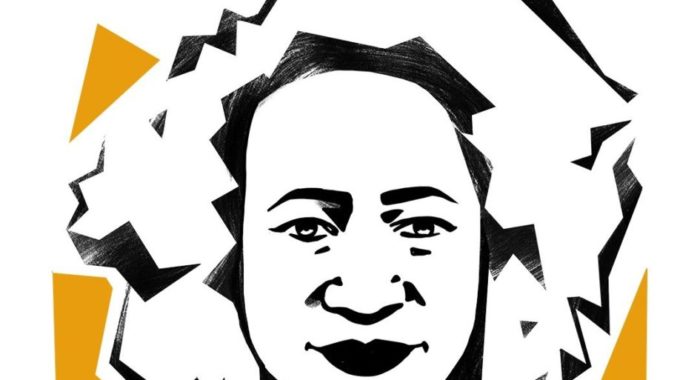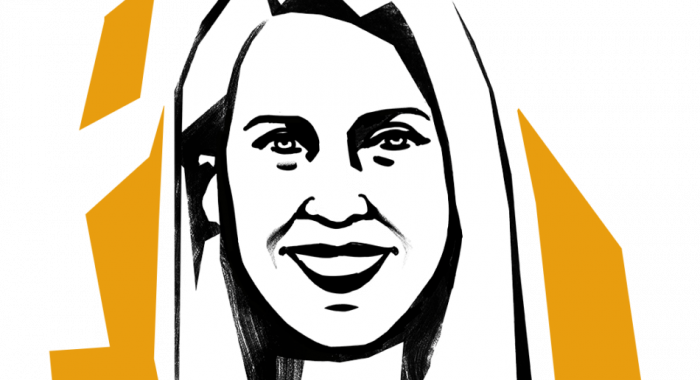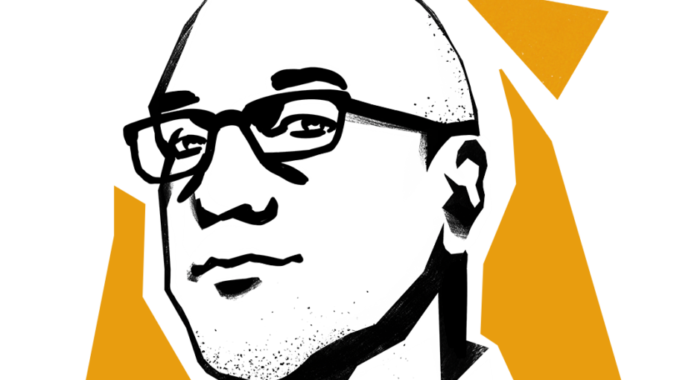The seventh edition of our international conference tackled the troubling realities of our age and looked at how stories can explain them, put them in context, while also giving a voice to those that have not been heard. We saw on stage 13 amazing speakers – Pulitzer Prize-winning journalists who wrote about human tragedies, investigative reporters, award winning visual storytellers, mental health professionals who heal towns, media innovators who tell stories through audio, virtual reality or live performances – who shared from their experience, offered useful tips and advice and inspired us to become better.
Here are the main takeaways from the second day:
Read here the takeaways of the first day.
NARATIV

Oscar nominated filmmaker Murray Nossel and psychiatrist Paul Browde opened the second day with a talk about the principles that shape their storytelling method, which is based on the assumption that there is a reciprocal relation between listening and telling.
- There is always something to acknowledge about someone else. If the acknowledgement is heartfelt and true, it works to create an atmosphere of listening. (Murray)
- Story came as a personal need for me. I was a person who was HIV positive in a world where it was impossible to talk about that. It was important for me, it contributed to my health. It’s possibly why I’m alive. I took the tremendous anxiety I live with and made it pass. And I realized it wasn’t only me, it was other people who also had a story to tell, so we could become listeners. Why listen? Because people needed to tell their stories. (Paul)
- Nobody can argue with me about what happened to me. So it’s important to describe your conclusions and let the people who listen come to their own. (Paul)
- Remember your heritage. There’s something about invoking your heritage, all the people who came before you, who made the space for you to be who you are right now, that opens up your heart. And if we’re not interested in opening up our hearts, I personally don’t understand why we do storytelling at all. (Murray)
- Story is the answer to the question “what happened?”. The “what happened” method means you’ve got to be able to hear it, see it, smell it, taste it and touch it. Everything else is excluded. You don’t offer any judgement, criticisms, opinions. You have to find an empirical way to tell your story.(Murray)
- Specificity about what happened to you is actually what connects. (Paul)
VERA ION

Romanian playwright Vera talked about how truthful storytelling can shape and redefine communities
- The stronger thing you can do when you feel afraid is to just open up and be vulnerable. I felt a sentiment of relief from the audience when I performed a play I was very afraid to do. I did it as a leap of faith and I found out it eliberated the others, the audience, as well.
- We put on a storytelling project called Write Yourself, for seven years we’ve been working with people who are articulating their stories into theater plays or scripts. It is an incredible adventure to work with people who are investigating their own stories. I often hear them saying ‘My story is not interesting enough’, and I tell them ‘It’s your emotional life, your experience, it’s about finding the tools to express your sensibility and your persona.’
- I noticed two models of storytelling, two extremes of telling a story: the mainstream storytelling, which is unilateral, where you have many people who receive the same information from a source (for example, a successful movie produced by Hollywood). People can’t directly communicate with the source of the story, the audience is small, the story transmitter is big, the story doesn’t change, it always stays the same. The other model has people sharing stories between each other, triggering stories in one another, on an equal level. This way, the story always adapts to the receiver, people empower each other, one story can trigger another story. But it takes time, because it takes time to build trust, you need to invest your time and vulnerability. I always feel very weird when I ask people to share personal stories and I don’t share mine.
- How can we empower a network of storytellers? The first model leads to alienation, a passive attitude, and I think we need to change that if we want to move forward to a community of storytellers. I don’t have an answer to how we can make a change. One exercise is always to go back to what you see and what you hear. It’s a mental exercise that I recommend every day. Stop and describe what you see around, like a camera, instead of projecting things.
ELIE GARDNER

Photojournalist Elie Gardner shared her story on documenting minority and underprivileged communities, and how it transformed her life.
- I knew from the beginning I wanted to tell stories about the light in the dark. I can cover bloody stories – but I won’t cover the blood on the ground from those who die, but the blood pumping through the veins of survivors.
- Telling stories about Syrians was tricky, because I got rejected a lot. People were afraid if they said the wrong thing their families would be harmed. Someone asked not to show her face. Another man talked to me only 10 minutes and said he thought reporters were objectifying people for awards and paychecks. I wondered if this man was right. I thought about changing my career. I thought of becoming a civil servant, or a barista. Just when I was about to give up, I went to a party in Istanbul and I met Ziad.
- I told the story of Ziad’s journey through Europe and those of the people travelling with him. I often would forget the gravity of their situation. But it wasn’t the few things in their backpacks that they brought, it was their mindset that helped them. Having lost everything, or almost everything, gave them a sense of meaning and a sharpening focus of what really mattered in life. They believed in the power of their own stories.
- It is the story that most affected my life. On the journey, Ziad and I became close. After the story published, we stayed in touch. He sent me pictures from Norway, I sent him a picture of a statue in Dubai that made me think of him. Five months after the story was published, I went back to Norway to visit Ziad. We told each other that we loved one another.
- Stories have changed my own life for the better. They help me to face what makes me feel very uncomfortable, to shed stereotypes. I no longer think stories are a way to give a voice to the voiceless. We listen, because everyone has a voice.
JACQUI BANASZYNSKI

Jacqui Banaszynski talked about stories that still haunt her, stories she wish she could go back to and see how they unfolded, stories we all carry with us and why we need to keep telling them, offering a couple of lessons or advice:
- Finish what you start. Stories have more shelf life than we think they do, because stories have an echo all through society. So don’t give up on stories so fast. Sometimes you’re not ready or confident enough to tell them, but they come back around. When there’s still a question, an unfinished business, you need to think about it.
- Objects in the mirror are closer than they appear. Unless we look backwards, we forget. If we don’t look back in our lives, at our history, it will come back and bite us in the ass.
- History changes how we understand the present. The story began before we got there and will end long after. Don’t forget to look behind you and see how close it is, because there’s a lot we risk if we are too afraid or too lazy to look behind. If we don’t understand there’ s a history before us, we get people wrong.
- Quit whining and get back to work. Journalism is fine, it has a life that is robust and new. It has new tools that will take us into the future and help us tell stories as we need to tell them. Use those tools to keep the stories alive so we can understand each other and get closer to each other in a shared purpose and mission. Even if journalism is struggling, all we can do is go back and do the job. Doing the job is the salvation.
- Anticipate. Try to think about where a story or an issue is going to be in several years, so we won’t lose the voice of the people involved in the history now. Think about what is tomorrow’s essential history that is happening today.
- The physics of storytelling. If you are trying to connect to people, to help them understand, the more personal and intimate the story, the more universal it is.
TOM FRENCH

Pulitzer Prize-winner Thomas French, co-author of the heartbreaking and heartwarming memoir Juniper, mesmerized the room at the end of the second day of #Story17 with his oral storytelling skills. He told us the story of Carlo, the 13 year-old manager of his middle school’s rock band, The Pink Dinos, and his tale of unreciprocated love. He talked about Inshala, a female tiger on the verge of extinction at a zoo in Florida, and her reluctant flirt with another tiger, the lazy Eric. He told us about the last vacation a mother took with her two daughters in Florida one summer, before they were killed and thrown in a river. But he didn’t reveal the ending to any of those stories before making an important point – stories need an engine that drives the reader, that makes them wonder what happened next. And that doesn’t always come from the subject or topic of a story, it comes from how you frame it, how you structure it and how you write it.
- We’re drawn to stories again and again because we need to know what it means to exist inside those facts.
- Stories that matter survive. They’re a way of making sense of ourselves and if we can’t make sense of ourselves, we’re lost.
- We need to know how we all unravel. We need to know what the next chapter holds.
Everytime we go out into the world we need to be prepared because all of it matters. Everyday, life exceeds fiction. Thomas French #story17
— Luiza Ilie (@LuizaIlie) October 21, 2017
Photos by Cătălin Georgescu.



